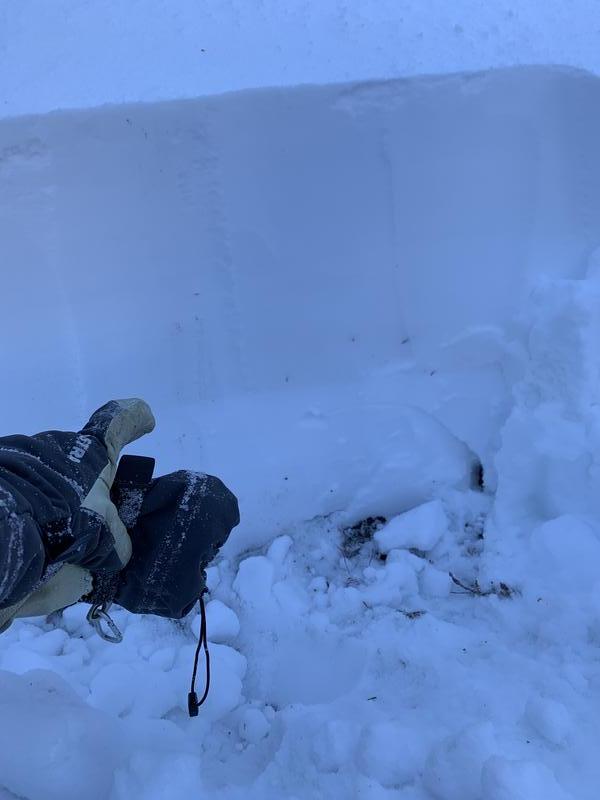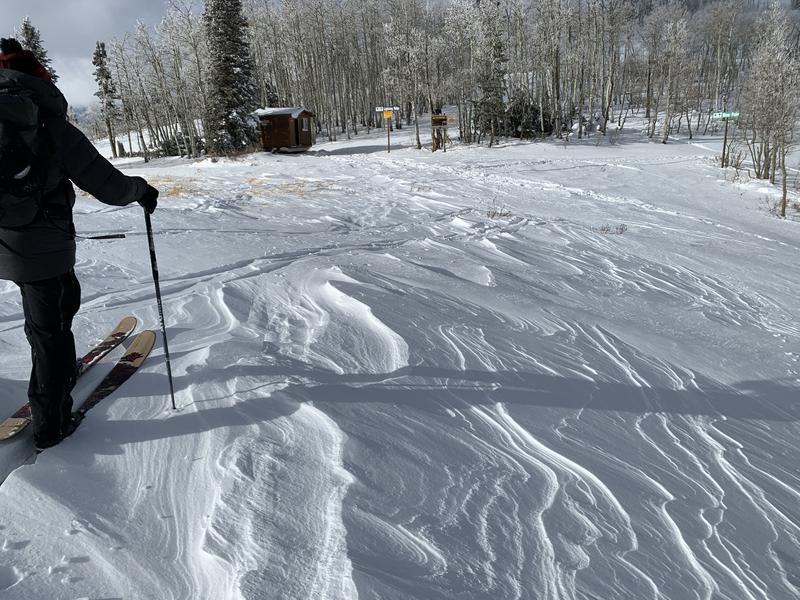Observation Date
11/14/2020
Observer Name
Wilson, Hardesty, Davis
Region
Ogden » Powder Mountain
Location Name or Route
Lightning Ridge
Comments
We dug test pits on a north-northeast aspect at 8,500 feet, and on a more protected north aspect at 8,920.
Only in the higher elevation pit did we get propagation of fracture across the column (ECTP23), failing mid-storm under the surface windslab. The fracture was difficult to initiate, and the surface block did not slide easily after fracture. In both pits, compression tests failed easily (CT5, CT7) down 10-15 cm below the surface wind slabs, with resistant planar fracture character. I expect these failure planes to heal quickly.
In both pits, the new snow accounted for over half the total snow depth. In the higher pit but not the lower pit, the new snow was dusty and darker than the older snow. Great storm marker, where it exists!
Top picture shows 10 cm thick 1-Finger slab, over 2cm of graupe,l and then 4Finger hardness to the ground.
In the bottom picture, the dust makes the new snow easy to differentiate from the previous storm.


Photos show wind impact on ridglines and on the slopes below.



Today's Observed Danger Rating
Moderate
Tomorrows Estimated Danger Rating
None
Coordinates






